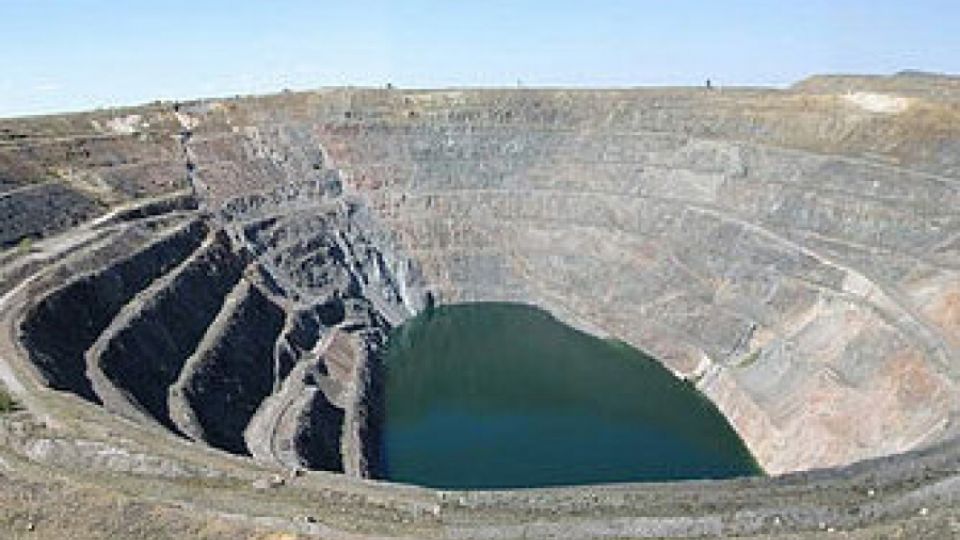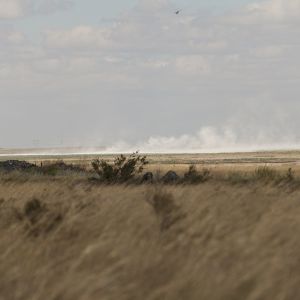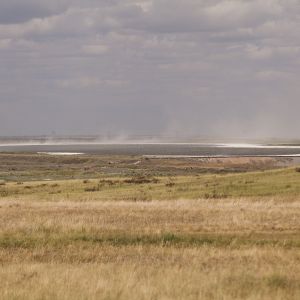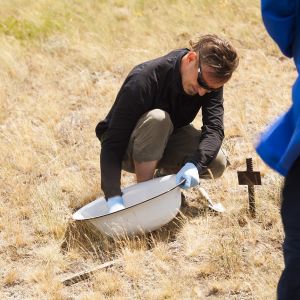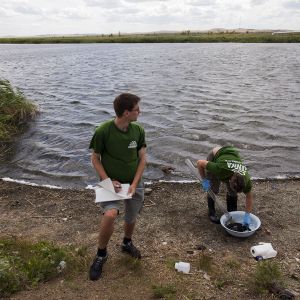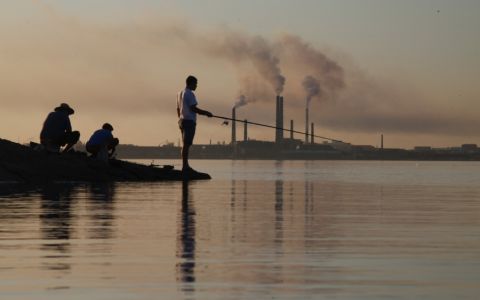Stepnogorsk was found in 1959 when large resources of uranium were discovered and Stepnogorsk Virgin Mining and Chemical Corporation was established – operating the largest uranium processing plant in Kazakhstan and one of the largest in the world. The mine at village Shantobe and the dock in Atbasar district belong to the factory too. For decades, industrial waste water has been discharged into the three tailing ponds with an area of 800 ha. The technology guaranteed safety of the hazardous waste – but only under condition of continuous operation of the processing plant and continuous irrigation of the ponds. Nowadays, all 70 thousand inhabitants live under threat of 500 ha dusty radioactive beaches that are getting larger every year.
During 1993 – 1995, due to a significant decline in production, the tailing ponds began to receive less waste and the water balance has been broken. Dry beaches have appeared at two of three ponds, and they started to dust intensively. The threat of large-scale radioactive contamination occurred.
In 1999, the property of Virgin Corporation became the property of Sabton Ltd. that soon transformed into KazSabton Ltd. The contract that has been signed excluding responsibility of the new owner for radioactive waste accumulated prior to the transaction. According to the contract, KazSabton was obliged to ensure continuation of industrial production within 5 years in all three facilities: energy, chemical and steel production. But, this never happened…
New owners are coming
In 2001, the government of Kazakhstan approved the programme for conservation of uranium mining facilities and elimination of uranium mining consequences for the period of coming ten years till 2010. In accordance with the Programme, money for restoration of the KazSabton tailing ponds should have been allocated from the state budget in the second stage (between 2006 and 2010 years). Ministry of Energy and Mineral Resources has proposed to shift the case on the priority list. Anyway, the funds were insufficient. Perhaps, if KazSabton would take part in financing of the works, the money would be found, but the company declined to participate at all, and the project died.
In 2003, the company Vasilkovskoe Zoloto was required to carry out remediation works. It was owned – the same as KazSabton – by Israeli Levaev Group. Vasilkovskoe Zoloto was supposed to develop technical project for restoration of pond No. 1, Kazsabton was responsible implement the project, and the state budget should secure financing.
It seemed that the ice had broken. In 2004, Vasilkovskoe Zoloto drafted the project – it proposed to cover dusty tailing pond by half meter layer of non-radioactive stones. But implementation failed, because KazSabton did not prepare necessary documents to release money from state budget. Consequently, in September 2004, KazSabton was liquidated and its uranium industry branches were taken under management of the state nuclear company Kazatomprom. New company Stepnogorsk Mining and Chemical Combine was found, and metallurgical plant and the mines were reopened.
However, the problem of radioactive dust got frozen. In mid-2005, SMCC Company began to work on the program Molybdenum Kazakhstan. It was planned to construct a factory to process copper and molybdenum ore from Kyzyl-Tu mines. In the same time, question arose where to landfill new 40 – 50 million tons of non-radioactive waste from this industry. The project for the first stage estimated production of more than 10 million tons of the waste which landfilling would cost 13 million EUR. To ensure construction works, funding of 4 million EUR was ensured from Vasilkovskoe Zoloto. All obligations on Stepnogorsk tailing ponds restoration were put in the contract of SMCC Company.
Unfortunately, economic crises changed the plans again. After significant drop of the world prices of molybdenum, MoliKen Corporation stopped processing the ore from Shorskoye mines. For optimization of Kyzyl-Tu expenditures, another location was chosen for construction of ore enriching plant and landfilling the tailings. Ultimately SMCC Co. left holding the bag – with the obligation to remediate the tailings that they did not produce, and without any finances to implement the task.
People under threat
Situation became critical. The tailing ponds content 45 million tons of fine radioactive pulp (total radioactivity 150 thousand Curie). Because of no irrigation, the more the half of the area dried. Constant wind distributes radioactive dust in wide surroundings of the industrial zone.
On the territory of Stepnogorsk including suburbs live about 70 thousand people who started to be exposed to radioactive pollution. Three villages – Aksu, Kvartsitka and Zavodskoy, located just in the vicinity of tailing ponds, are home to 8 thousand people. Industrial zone of Stepnogorsk is placed in Zavodskoy too, and many commute from the town to work here. Others graze domestic animals in the steppe surrounding radioactive waste, and grow fruits and vegetables in the territory that is partly sold on the market. As a result, another 30 thousand people might be threatened.
In 2005, scientists revealed disturbingly high levels of gamma radiation at some suburbs of Stepnogorsk (from 0.63 to 1.50 microsievert per hour). In 39 out of 132 researched houses, concentration of radon were higher than 200 Bq/m3. In many villages, the level of alpha-radiation exceeded hygienic limit (0,1 Bq/l) four times up to 73 times (in Prichechniy, 200 inhabitants using the same water source).



